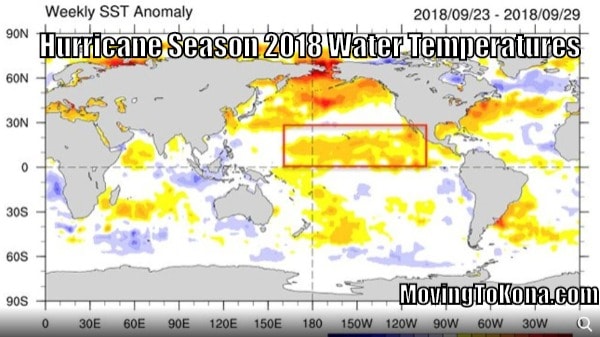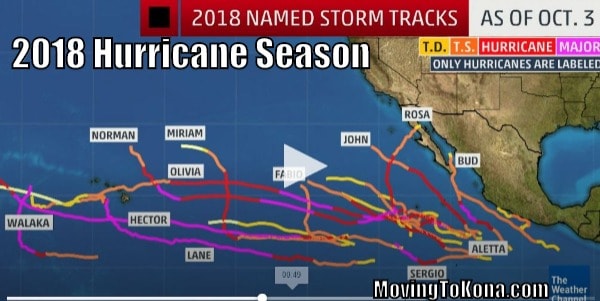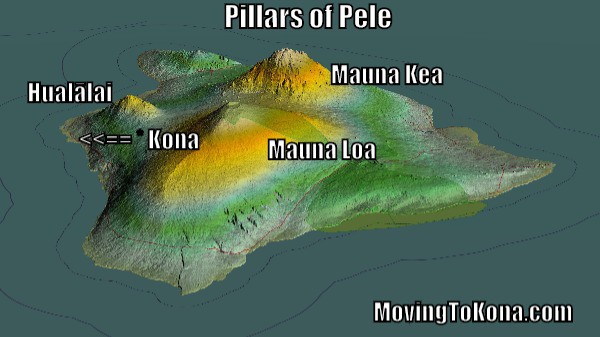Two of the Three Busiest Eastern Pacific Hurricane Seasons
Have Now Occurred in the Past Four Years
Just because we only had a few ‘hurricane scares’ doesn’t mean hurricane season was slow…
The Weather Channel reports, “Two of the Three Busiest Eastern Pacific Hurricane Seasons Have Now Occurred in the Past Four Years.” Through Oct. 3, there have been 19 named storms, 12 of which became hurricanes, nine of which were major hurricanes – at least Category 3 intensity – in the eastern Pacific basin from the International Date Line to Mexico’s Pacific coast in 2018. Only 1992, featuring a record 27 named storms and record-tying 16 hurricanes, and 2015, also with a record-tying 16 hurricanes and the most intense hurricane on record in either the eastern Pacific or Atlantic basins, had a higher impact than 2018.
NOAA has produced Sea Surface Temperature (SST) maps for studying the cause behind an increase in hurricanes.
Just Why Has The 2018 Hurricane Been So Active? A major reason for this can be found in the Pacific Ocean water temperatures. Since the start of hurricane season, sea-surface temperatures have generally been above average from off Mexico’s Pacific coast to roughly near the International Date Line.
And… Hurricane Walaka Became A Category 5: Hurricane Walaka was the largest Central Pacific Basin hurricane in over a decade. We didn’t hear about it because it missed Hawaii by 1,000 miles. Even though it missed the Hawaiian Islands, the size of the hurricane and the strength serve as a warning to remain vigilant.
Hurricane Walaka is the nineteenth named storm and the eighth major hurricane of the 2018 Pacific hurricane season. The hurricane originated from over a thousand miles south-southeast of Hawaii on September 25. The National Hurricane Center tracked the disturbance for another day or so before it moved into the Central Pacific Basin. Walaka gradually strengthened, becoming a hurricane on October 1. Walaka then began to rapidly intensify, reaching Category 5 intensity by early on October 2.
If you look at the image from KHON2 you can see how large the weather system was when compared to the State of Hawaii.
It has been a busy hurricane season. The Weather Channel reports, “Two of the Three Busiest Eastern Pacific Hurricane Seasons Have Now Occurred in the Past Four Years.” Click image below for video.
Amazon Products
NOAA – Number of Tropical Cyclones per 100 Years: It is not too late in the season for a Pacific Ocean hurricane to form.
Read More:
- Homeowners Insurance vs Hurricane Insurance vs Flood Insurance – What’s The Difference?
- Hawaii Hurricane Preparedness Checklist – 20+ Immediate Tips: ʻOhana Planning for Hurricane Safety
- Hurricane Preparedness: The Most Overlooked Hurricane Prep Items (Are Surprising)…
The Kona Rain Shadow: As we discuss why Kona gets so little rain, we will also talk about the hurricanes and tropical storms of 2018.
Three Pele-grown mountains protect Kona when weather originates from the east (and sometimes to the south): Mauna Kea at 13,803 feet, Mauna Loa at 13,679 feet and Hualalai at 8,271 feet.
Read More: Kona And The Pillars Of Pele? Record Rain in Hilo – No Rain in Kona. The Kona Rain Shadow Effect.





